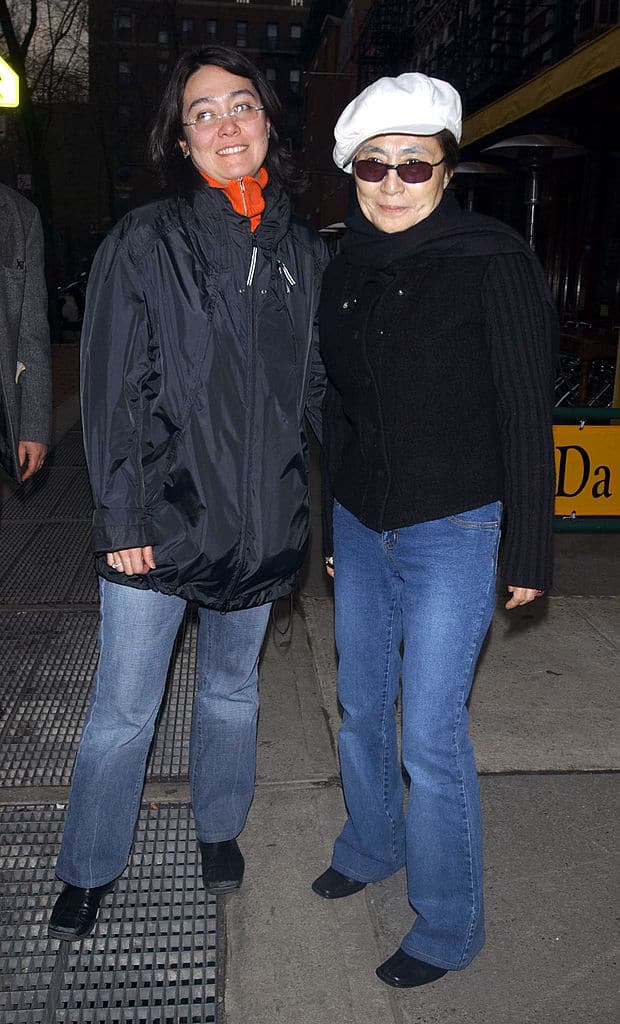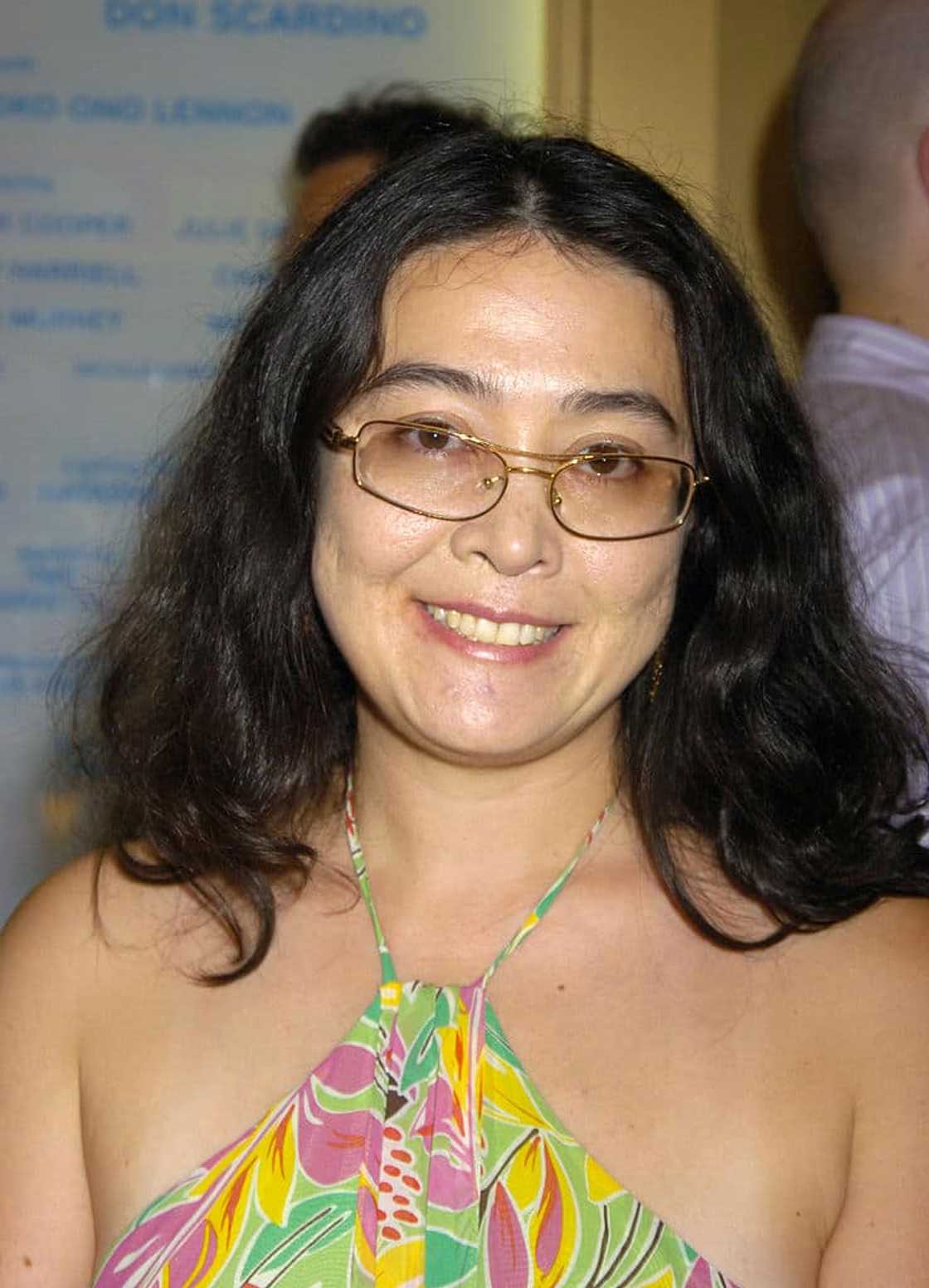Yoko Ono's Daughter: What Does Kyoko Chan Cox Do?
What does the daughter of Yoko Ono, a figure intertwined with art, music, and cultural shifts, truly do? Kyoko Chan Cox, the daughter of the avant-garde artist, is an actress, and a teacher, her life story is as compelling and multi-layered as her mother's artistic legacy.
Kyoko Chan Cox, born in Tokyo, Japan, on August 8, 1963, is a name whispered with recognition within certain circles, a testament to her lineage and her own artistic pursuits. Her life, while connected to the incandescent world of her mother, Yoko Ono, has been defined by a degree of privacy, a path of her own making. She is the daughter of Ono and Anthony Cox. Her life has been punctuated by both immense proximity to artistic luminaries and, at times, a painful separation from her mother. Kyoko's journey provides a fascinating study of personal identity amidst a landscape of profound artistic and cultural influence.
| Category | Details |
|---|---|
| Full Name | Kyoko Chan Cox |
| Date of Birth | August 8, 1963 |
| Place of Birth | Tokyo, Japan |
| Parents | Yoko Ono and Anthony Cox |
| Marital Status | Previously married to James Jim Scott Helfrich |
| Known For | Actress and Teacher |
| Notable Works | "Bed Peace" (1969), "The Real Yoko Ono" (2001), "Vain Glory" (1986), "3 Days in the Life" (1970) |
| Education | Details not readily available |
| Career | Actress, Teacher and Producer |
| Relationship with Yoko Ono | Reconnected in the late 1990s after decades of separation |
| Additional Information | Maintains a relatively private life. |
| Reference | IMDB - Kyoko Chan Cox |
Kyoko's early life unfolded in the shadow of her parents' artistic pursuits. Her mother, Yoko Ono, was already a significant figure in the avant-garde art world. Her father, Anthony Cox, further immersed her in a milieu of creativity and experimentation. Kyoko received credits for her work in experimental films made by her father, including "Vain Glory" (1986), "Bed Peace" (1969), and "3 Days in the Life" (1970). These films offer a glimpse into the family's artistic endeavors during that time, a period of great creative output. The echoes of world war II, which cast a long shadow over Ono's family during that time, shaped the family dynamics. In 1945, the family took shelter in a bunker in Tokyo after the bombings. The circumstances in which Kyoko grew up were unlike any other.
The actress has had a film career that has spanned several years, albeit in a manner that underscores her preference for a more private life. Her performances in films such as "Bed Peace" and "The Real Yoko Ono," demonstrate her presence within the artistic scene. Though her filmography might not be extensive, her presence in these works provides insights into her connection to her mother's artistic world. It is worth noting that her involvement extends beyond just acting; she is also credited as a producer, especially for Vain Glory, which further cements her place within the creative sphere.
Kyoko's life took a dramatic turn in the late 1960s, when Cox joined a cult and took Kyoko with him. This period resulted in an extended separation between mother and daughter, lasting over two decades. During this time, Yoko Ono endured the heartache of separation, her public persona and private life marked by this profound personal loss. Then, In the late 1990s, after years of separation, Kyoko and Yoko reconnected. This reunion marked a significant turning point, allowing them to rebuild their relationship. The reconnection was a testament to their enduring bond.
Kyoko's connection to her family extends beyond her parents. She shares a unique, albeit different, connection with her half-brother, Sean Lennon. While Sean has followed in the musical footsteps of his father, John Lennon, Kyoko has carved out her own path in the world of acting and teaching. The shared bond of Yoko Ono provides a unique connection between the siblings.
Yoko Onos impact on the cultural landscape is undeniable. Her influence reaches far beyond her association with John Lennon. Her avant-garde art and music have challenged conventional norms. Her message of peace and activism has resonated with audiences globally. The "Happy Christmas Kyoko" lyrics in the song "Happy Xmas (War Is Over)", a song released in 1971, written by John Lennon and Yoko Ono, show a glimpse into their family life. Kyoko's presence and role in her mother's life further underscore the depth and complexity of Onos influence. From her work in the visual arts to her pioneering musical efforts, Ono has left an indelible mark. The war had a significant effect on Onos family. According to reports, the war created a physical divide between the family members, further emphasizing the need for family.
Yoko Ono, has been a prominent figure in the art and music scene. Her daughter, Kyoko, has also played her part. The life and career of Kyoko Chan Cox demonstrates a unique perspective on family and artistic expression. Her story illustrates the intertwining of family, art, and personal choices.
The legacy of Yoko Ono, the influence she has had on the course of art and culture, provides a backdrop for Kyoko's own life. The interplay between these two individuals provides a compelling narrative of art, motherhood, and identity, a narrative still unfolding.



